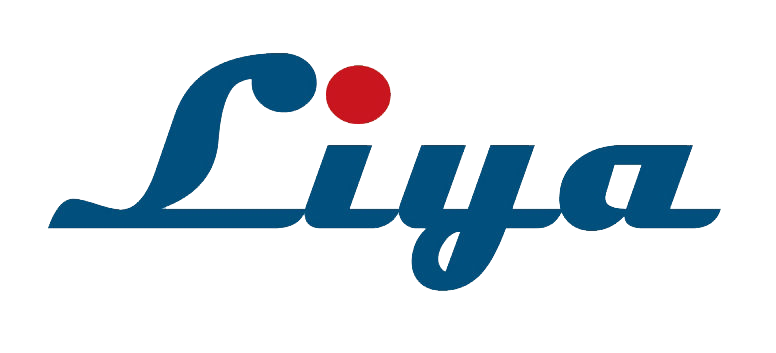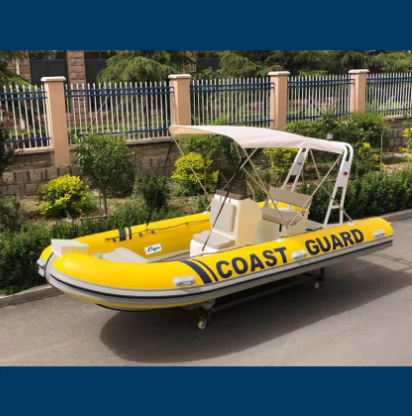Factors Influencing RHIB Inflatable Collar Replacement Intervals
Usage Frequency and Operational Demands
How often a Rigid Hull Inflatable Boat (RHIB) gets used and what kind of stress it faces really speeds up the wear on those inflatable collars. When these boats spend most of their time doing tough jobs like search and rescue ops or border patrols, the collars take a beating that means replacing them more often than normal. Keeping track of how the boat is actually being used day to day makes all the difference when planning maintenance work. Most marine experts recommend looking at replacement schedules through the lens of actual hours spent in service rather than just guessing. This helps catch collar deterioration before it becomes a serious problem during critical operations.
Environmental Exposure (UV, Saltwater, Temperature)
The environment really affects how long RHIB inflatable collars last before they need replacing. When left out in the sun for too long, UV rays start breaking down the materials, which is a big problem for anyone who keeps their boat in sunny areas or leaves it outside all day. Saltwater is another enemy altogether. Boats used in coastal areas tend to see their collars wear out much faster compared to those kept in lakes or rivers. Boat owners who get this stuff know what to look for. Some folks switch to UV resistant materials just because they've seen what happens otherwise. Others make sure to rinse off their boats thoroughly after heading out on the ocean. These small steps make a real difference over time.
Material Degradation Over Time
What RHIB collars are made from really determines how long they'll last and what kind of upkeep they need. Materials like Hypalon, PVC, and Polyurethane all degrade at different speeds depending on their composition. Take Hypalon for example it can stick around for about 20 years before showing signs of wear, whereas PVC tends to lose its flexibility after just a few seasons in service. Knowing these differences matters when planning maintenance schedules. Boat operators who understand how each material behaves over time can spot problems earlier during routine checks. This proactive approach means replacing parts before they fail completely, which saves money in the long run since unexpected breakdowns during operations are both inconvenient and expensive.
Material Types and Their Impact on Replacement Cycles
Hypalon vs. PVC vs. TPU Durability
When choosing between Hypalon, PVC, and TPU for RHIB inflatable collars, the decision really impacts how long they last before needing replacement. Most people know Hypalon stands out because it resists UV damage and wear much better than other options. Boaters who want something that will stick around through many seasons tend to go with this material. The tough nature of Hypalon makes all the difference in rough conditions where collars get beaten up by rocks, sun exposure, and constant use. PVC might seem like a good deal at first glance since it costs less money upfront, but truth be told, these collars just don't hold up as well against harsh weather or rough handling compared to either Hypalon or TPU. That means boat owners end up replacing them more often than they'd prefer. TPU strikes a nice middle ground though. It takes what works from both Hypalon and PVC without inheriting their weaknesses. Boat operators find TPU collars durable enough for most situations while still keeping expenses reasonable over time. Many mariners report getting decent service life from TPU even in demanding coastal areas where saltwater and UV radiation take their toll.
How Fabric Coatings Affect Lifespan
The right fabric coatings make all the difference in how long an RHIB inflatable collar lasts. Some coatings work better at keeping water out, which matters a lot for boats spending time on the water. Others help protect against UV rays so the fabric doesn't break down under constant sun exposure. Checking these coatings regularly makes sense because it helps spot problems before they get bad and start damaging the actual material underneath. When someone knows what shape their coating is in, they can plan ahead for replacements instead of waiting until something goes wrong. Getting this right means the RHIB stays functional for longer periods without unexpected failures during important trips or operations.
Inspection and Maintenance Best Practices
Routine Leak Detection Methods
Keeping those RHIB inflatable collars in good shape means doing regular leak checks. Most folks find either dunking them underwater or applying soapy water works pretty well for spotting holes before they get worse. How often these inspections happen really depends on just how much the boat gets used throughout the season. For boats that see frequent action, monthly checks make sense while occasional users might get away with quarterly inspections. Catching those tiny pinpricks early saves money down the road when what could have been fixed cheaply turns into expensive repairs later on.
Abrasion and Puncture Checks
Checking for wear and tear on RHIB collars should be part of any regular maintenance routine. Operators need to look closely at the surface for signs of damage while also running their hands over the material to spot any soft spots or thin areas. Catching problems early means fixing them before expensive repairs become necessary down the road. When maintained properly, these inspections keep the collar strong and functional for much longer than it would otherwise last. Most boaters know from experience that neglecting this simple step leads to sudden failures during critical moments out on the water.
Cleaning and Storage Protocols
Getting the cleaning and storage right makes all the difference for those RHIB collars. Give them a good rinse with clean water after every trip and maybe throw in some gentle soap to get rid of salt residue and grime. Salt buildup will eat away at the materials over time if left unchecked. When these boats sit idle, keeping them somewhere cool and dry really matters too. Most garages work fine unless there's extreme weather outside. The heat and moisture from damp environments just break down the inflatable parts faster than normal. A well maintained RHIB stays ready for action whenever needed without unexpected failures during important trips.
Signs Your RHIB Collars Need Replacement
Persistent Air Loss Despite Repairs
Persistent air leaks in RHIB collars after several repair tries usually means the material is starting to fail somewhere. At this point, replacing them entirely becomes necessary for both safety reasons and proper performance. Tracking how the air pressure changes over time gives concrete information on whether replacement is needed soon. Maintaining records of pressure levels alongside all previous repairs helps determine exactly when collar replacement makes sense from a reliability standpoint while ensuring continued functionality remains intact.
Visible Cracking or Delamination
Cracks or peeling sections on RHIB collars mean big trouble and usually point to unsafe conditions. When this kind of damage appears, it typically means the structural strength has dropped significantly, so replacement becomes critical before anyone gets hurt. Getting a professional inspection is actually pretty important here since it confirms whether immediate replacement is needed. Boat owners who let cracked collars go unchecked run real dangers out on the water. Experts looking at those damaged areas will spot problems most people miss, and their assessments help prevent accidents down the road. Waiting too long to fix these issues just raises the chances something goes wrong during operation.
Reduced Structural Integrity
When an RHIB starts losing its structural strength, we typically see reduced buoyancy or problems keeping its shape intact. These issues are pretty clear indicators that collar replacement is probably needed soon to keep the boat functional and safe for everyone onboard. Getting regular checkups from qualified technicians helps track these structural changes over time and gives us a better idea when actual replacements become necessary. Working with experienced professionals ensures that sudden breakdowns don't happen during crucial operations while also extending the overall lifespan of the RHIB through proper maintenance practices.
Repair vs. Replacement Decision Guidelines
When Patching Is Sufficient
For small leaks in RHIB collars, patching usually works as a cheap and fast fix. But folks need to remember there are limits to how far this method will go before problems get worse. When deciding whether to patch something, good maintenance plans should have specific guidelines about where and how big the damage actually is. Small holes that aren't near the seams or other stress points generally respond well to patches. On the flip side, if the tear is close to a seam line or just really big overall, then patching probably won't hold up under normal conditions anymore. Safety becomes an issue too when dealing with larger damages.
Cost-Benefit Analysis for Full Replacement
When faced with the choice between continuous patching work and going for a complete RHIB collar replacement, doing a thorough cost benefit analysis makes good sense. The assessment should look at more than just what's coming out of the wallet right now. Time lost while the vessel sits idle matters too, along with safety concerns that come with weakened collars. Many operators find that the hidden dangers of running patched up equipment actually cost more in the long run than simply replacing it from the start. Newer generation materials on the market today tend to last longer and perform better under stress. Some boat owners report saving money over time because these modern options require fewer repairs and are kinder to the environment, making replacement an increasingly attractive option despite higher upfront expenses.
FAQ Section
What factors influence RHIB inflatable collar replacement intervals?
Usage frequency, operational demands, environmental exposure, and material degradation over time can significantly impact replacement cycles for RHIB inflatable collars.
How do environmental conditions affect RHIB collars?
Environmental factors like UV exposure, saltwater, and temperature can lead to accelerated wear and tear, necessitating more frequent maintenance and replacements.
What materials are commonly used for RHIB collars, and how do they compare?
Hypalon, PVC, and TPU are common materials, each offering different levels of UV resistance, abrasion durability, and longevity.
What are signs that my RHIB collars need replacement?
Persistent air loss, visible cracking or delamination, and reduced structural integrity are key indicators that collars need replacement.
When should I consider a full replacement over patching?
A full replacement is advisable when patching is insufficient to maintain safety, usually due to extensive or critical damage compromising the collar's functionality.
Table of Contents
- Factors Influencing RHIB Inflatable Collar Replacement Intervals
- Material Types and Their Impact on Replacement Cycles
- Inspection and Maintenance Best Practices
- Signs Your RHIB Collars Need Replacement
- Repair vs. Replacement Decision Guidelines
-
FAQ Section
- What factors influence RHIB inflatable collar replacement intervals?
- How do environmental conditions affect RHIB collars?
- What materials are commonly used for RHIB collars, and how do they compare?
- What are signs that my RHIB collars need replacement?
- When should I consider a full replacement over patching?

